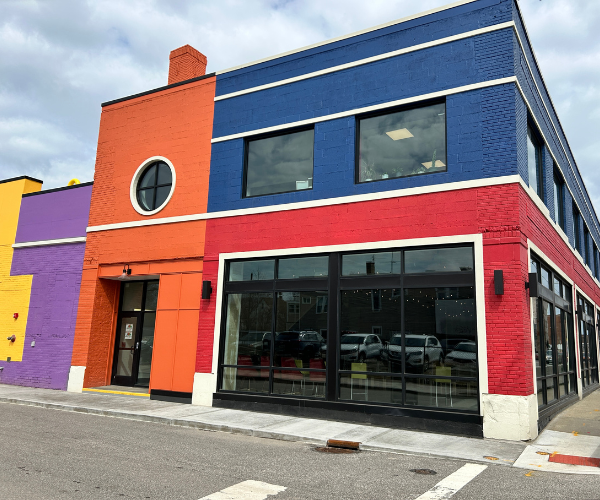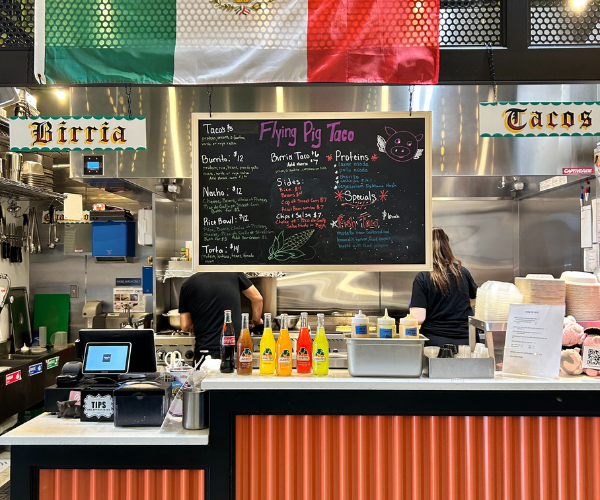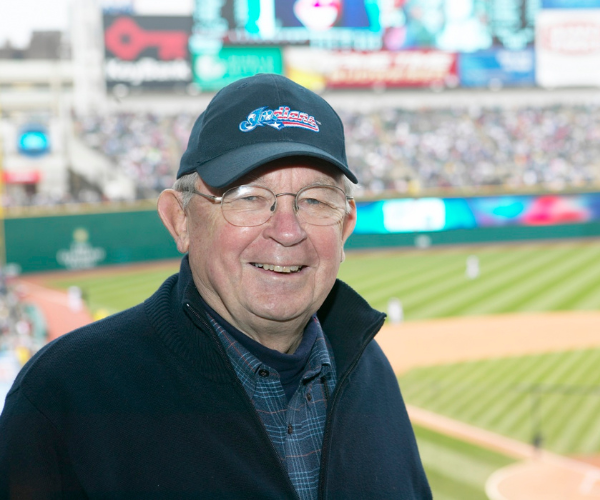Who Will Save The West Side Market?
by James Bigley II | Apr. 25, 2019 | 12:00 PM

ILLUSTRATED BY JON KRAUSE
Walking into the L-shaped produce arcade outside of the West Side Market is a little disorienting. At 9:30 a.m. on the first Saturday in March, one wing sits almost entirely vacant, save for two stands near the entrance. More than a third of the vendors have permanently left, perhaps due to a harsh winter season and reduced bounty. But one step into the second wing reveals the vacancy isn’t as simple as chalking it up to the weather.
Here, the vendors are vibrant, and the stands are teeming with life. Visitors pull wheeled coolers behind them as they peruse through mountains of colorful fruit and vegetables piled high on white tables. Children zigzag through the crowd, their laughter as loud and constant as the shouts from vendors outbidding each other. Everywhere you look, there’s someone calling out to you, asking you to buy something, begging you to eat.
At one stand, a vendor displays a ripe grapefruit sliced in half to showcase the freshness of his fruit. At another, an elderly, gray-haired woman wearing a purple jacket plucks a grape from a bunch and pops it into her mouth. Above her, behind the counter, a man stands by his son holding a wad of cash.
“Four berries. 5 bucks,” he shouts over the crowd. “Let’s go!”
Inside the main building, it’s much more quiet and less crowded. Here, the hall is vast, the arched ceiling’s Guastavino tile bronzed and knotted together like tiny loaves of bread. Many of the vendors have already been here for a few hours, prepping their stock, filling their cases with cuts of meat, cheeses and baked goods. Some are just beginning, flickering on the lights over their stands as customers linger in the aisles, patiently waiting for the day to begin. Still, others, such as Narrin Asian Spice & Sauce, remain dark.

When I find Don Whitaker, owner of D.W. Whitaker Meats and president of the West Side Market Tenants Association, he’s standing behind his counter at the center of the great hall wearing an apron. As we walk through the market, passing vendor after vendor and the occasional customer, Whitaker says this is slow for a Saturday.
“Normally you’d see twice as much,” he says. “People are coming here later.”
It’s a trend Whitaker has seen evolve ever since he began working at the West Side Market for another butcher as a 13-year-old. Now, as the owner of his own butchering business that expands across three stands with 19 employees, Whitaker says he could be open any day of the week. He’s got a wide assortment of deli meats. He’s got pork chops, pork roast and fresh roasting pigs. He specializes in small chickens that come out of Kidron, Ohio, and the Virginias and occasionally carries whole frozen ducks when they’re in season. The idea: sell the freshest cuts of meat to beat out the competition 10 feet away.
“It gets in your blood,” he says. “It’s a good living, but you have to work at it just like anything else.”
Working here isn’t easy. For years, antiquated market hours have been a point of contention for tenants who either cannot afford the staff or simply wish to be open at different times. As longtime vendors retire, new vendors have come in, but have struggled to keep shop due to an increase in rent and a steady decline in traffic.
The list of vendors on the market’s website is outdated, and it takes just one quick jaunt through the landmark to realize there’s quite a few vacancies that need filling. According to the city, 26 of the 81 stands in the produce arcade are unoccupied. The city is currently processing six applications to fill in some of those vacancies. Inside, only five of the 100 stands are empty, but some, such as the former Apple Cured Meats stand, have been empty and unused for more than a year.
“Why is that taking so long?” asks Whitaker. “These are the small problems I’m trying to fix.”

Tensions have also come to a head between existing vendors and the city of Cleveland, which owns and manages the property within the city’s public works department.
Although the city has spent $5.3 million on capital improvements since 2012, such as a new public parking lot, garage doors on the arcade, new boilers, lighting and exhaust repairs, many of the vendors complain about the absence of preventative maintenance and consistent improvement, citing lack of communication and failure to address repairs in a timely manner.
Coupled with competing local markets following the hottest trends such as food delivery service and more prepared hot foods, the West Side Market appears to be frozen in time, lagging behind the competition.
“The market is always slow to change and I think that’s what’s kept it [going] for 107 years,” says Whitaker. “But if you go through the trends, almost all public markets are run by cities and then they went to nonprofits.”
Since August, city councilman Kerry McCormack and Ohio City Inc., the neighborhood’s community development corporation, have been working on a proposal to move the management of the market out of the city’s hands and into that of a nonprofit that can raise funds and address repairs and capital improvements as needed. As part of this proposal, they want to take a deep dive into how the market is run and intentionally seek out trends competing local markets have found successful.
Although this isn’t the first time these conversations have occurred, many are convinced that there’s never been a more ripe moment than now to ensure the market’s future by revisiting the way it is operating.
“Change is coming,” says Whitaker. “We just have to accept it.”
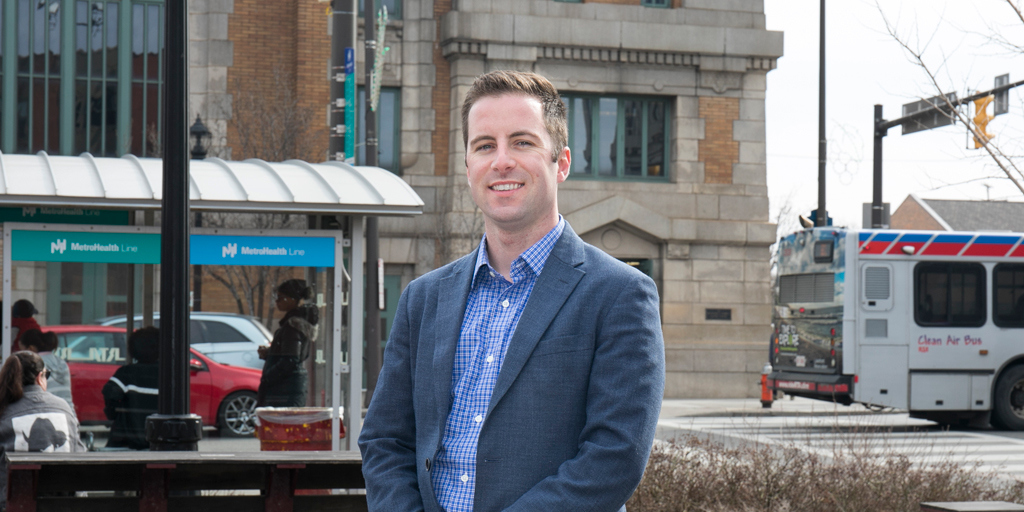
Built in 1912, the West Side Market was meant to be a bastion of produce and grocery. As one of three public markets owned by the city of Cleveland, its doors opened on Mondays, Wednesdays and Fridays when the Central and Broadway markets were closed, and on Saturdays to provide ample shopping opportunities to all of Cleveland’s residents. In the earliest days, as fathers traveled to work, their wives trekked to the marketplace to get food for supper. Those working third-shift jobs at local factories flocked to the market early and waited in line until the doors opened.
With 48 meat, 24 butter and egg, nine grocery, nine fish, 19 deli and 176 produce stands, it was as much the center of Cleveland’s food economy as it was a melting pot for immigrants and diverse ethnic communities. It functioned both as a grocer and as a city service feeding the masses.
In a forward for To Market To Market, a book by Joanne M. Lewis, former congresswoman Mary Rose Oakar wrote the West Side Market was “a microcosm not only of Cleveland, but also of the world...the West Side Market satisfies our human needs for food. It provides human contact for friends, neighbors, merchants, and it fulfills the need for public servants to be at their best, to meet and listen to the grassroots people.”
Indeed, over time, the West Side Market became not only a place for gathering food, but it became a selling point for the city, a place in which we could showcase our people.
Tom McNair, executive director of Ohio City Inc., points to the Irish population’s migration west of the market, the Jewish migration east, and the stout Hungarian community, whose St. Emeric Roman Catholic Church behind the market remains one of the last Hungarian-speaking parishes in the Catholic Diocese, as proof of its cultural significance.
“You can see all those cultural influences that came together, and in the middle of that was the West Side Market,” says McNair.
By its 100th anniversary in 2012, the West Side Market was recognized not just as a landmark and cultural crown jewel, but a place in which generations of real salt-of-the-earth merchants worked for their livelihood.
For some, like the Chucrays — a third-generation Ukrainian family who’s operated a meat stand since 1960 — the business was passed down over decades as one family member passed away and others retired. For others, like Whitaker, it was not uncommon for an employee to take on their boss’s legacy and start their own small business.
But with all of its rich history, it still had its problems. In 1992, the Ohio Health Department issued the West Side Market its 17th building and sanitary code violation within a two-year period. The city was ordered to repair peeling paint, fix clogged drains, remove rodent droppings and replace the old wooden planks of the basement meat and produce cooling lockers. According to The Plain Dealer, the city stated the deferred maintenance was a result of a lack of funds.
Coverage of the incident tarnished the West Side Market’s image, adding to rumors of rotten food and furthering soured public favor. Coupled with the growth of supermarkets and the ever-increasing migration to the suburbs, the West Side Market was facing larger, more appealing competition.
So the city used the centennial celebration to revamp the market and remind the public of its legacy. Ohio City Inc. was hired to rebrand the market with a new website, social media push and a slogan that “Life tastes better at the market.” They put together a committee to create a plan ensuring the next 100 years of its future.
In order to be successful, the plan outlined ways in which the market needed to change. Money needed to be invested in the district surrounding the market to bring people back to this central location. A shuttered second-floor former locker room overlooking the market needed to be utilized, perhaps as a commercial test kitchen, demonstration studio and event space. A campaign fund needed to be created to address capital improvements and a nonprofit arm of the market’s management would ensure the success of those fundraising efforts — an idea that had been previously discussed and immediately shot down by city council in 1985 out of fear of privatization.
“We had a whole strategic plan that was based around leveraging the West Side Market, turning it inside out and really allowing the West Side Market to create a more vibrant market district around it,” says McNair.
The ideas were fruitful. Public interest in the market blossomed around its centennial parade. Thousands came to the market for its first open Sunday in more than a decade. A November centennial gala was held in association with local celebrity chefs such as Michael Symon and Jonathon Sawyer. A campaign fund of more than $100,000 was dedicated toward market improvements.
When an electrical fire broke out in the market just two months later, the public rallied, raising more than $60,000 in donations to help with repairs and give relief to vendors who lost weeks’ worth of work. It proved market maintenance and management needed to be streamlined and that the public was buying into the market’s mission.
And yet, seven years later, the landmark is still stagnant.
“While the neighborhood has certainly seen a lot of positive change and momentum in the years following the West Side Market centennial, I think the West Side Market has remained largely the same,” says McNair.
Since 2010, a nearly 40-percent commercial vacancy rate in Ohio City has decreased to just under 2 percent, with 128 new businesses opening in the neighborhood, many of which have been merchants, brewers and food purveyors. More than 1,000 housing units have been completed. An additional 10-story mixed-use development with 250 apartments and 75,000 square-feet of retail space will begin construction this fall right across the street from the market — bringing with it a whole new crowd of shoppers.
“This is a conversation that continues to raise its head every 10 years or so, and every single time that happens, somebody commissions a study that talks about the future of the West Side Market,” says McNair. “I think the question we have to ask ourselves is what is in the best interest of the market to truly make it thrive in its surroundings.”
In a 2009 episode of the Food Network’s The Best Thing I Ever Ate, Michael Symon gives an impassioned speech about the beef jerky at J & J Czuchraj Meats.
“This isn’t your everyday jerky,” he says, grinning against a white background. “This is a process of love.”
Behind-the-scenes shots show owner Jerry Chucray carting a tub full of bloody brisket. We then see the seasoning process that uses a mix of cayenne pepper, garlic and secret spices, and how they marinate and smoke 50 pounds of meat at a time for 12 hours inside a home on Lorain Road.
When the camera cuts back to Symon, he drives his pitch home by comparing the tenderness of the jerky to biting into a steak.
“If I close my eyes, I could smell it right now,” he says, taking a deep breath. Suddenly a hand appears at the bottom of the screen, holding a plate with three hunky strips of bronzed, red jerky. Symon’s eyes snap open.
“That’s the stuff,” he says, taking one of the thick, sauced, perfectly smoked strips of meat and holding it up to his face with a cheesy Hollywood grin. “It’s just beautiful.”
He tears into it, then holds it up to the camera so the audience can see how textured and tender it is before he eats it in front of us.
“This is beef jerky at a whole new level,” he says. “When you eat the beef jerky at Czuchraj, it will change how you feel about jerky. And when anything changes how I feel about a certain dish, that makes it the best thing I ever ate.”
The three-minute video, now looped on a small screen at the corner of the J & J Czuchraj Meats stand, changed the way the Chucrays did business. Symon had been a loyal customer for years prior to the airing of the Food Network episode — and that kind of notoriety garnered overwhelming attention.
“We went from 20 pounds [of jerky] a week to 2,000 pounds and then 3,000 pounds,” says Jerry Chucray. “We started working 7 days a week. It took us a couple months to get out of that hole.”
It took nearly 60 years to build up the kind of following that’s carried their products directly into the local food supply of some of Cleveland’s best restaurants. Great Lakes Brewing Co. comes to the Chucrays for white pork and veal brats, prosciutto and dried chorizo. The Chucrays deliver 50 to 60 pounds of bacon to the brewery down the street and supply 500 pounds of kielbasa to Mabel’s BBQ every week. Both Southside and Hi and Dry in Tremont come to them for hot dogs and corned beef, while Luxe in Gordon Square gets their breakfast links and bacon.
For a mom and pop meat shop passed down by Ukrainian immigrants, the stand has quite a reputation, moving from its first, humble offerings of fresh garlic kielbasa, goose liver and head cheese popular when it opened in 1960 to expanding their products to include a variety of smokies, cured meats and jerky with an array of sauces and spices.
“If we didn’t change, we’d be out of business,” says Chucray, who took over the stand after his father died in 1982 and whose daughter, Amanda, now runs the shop.
Establishing that kind of brand takes time, decades even, and the dedication to suffer through occasional pitfalls. Surviving the slower months in the winter and less profitable years — like when the 2013 fire happened or when the parking lot was constructed in 2015 — required a kind of sacrifice on behalf of the shop owner.
“You’ve got to have a little money put aside because you know you might not have enough money to pay your bills or you might not be able to pay your workers,” says Jill Chucray, Jerry’s wife and co-owner. “I think a lot of the businesses that survived were businesses like mine that were established.”
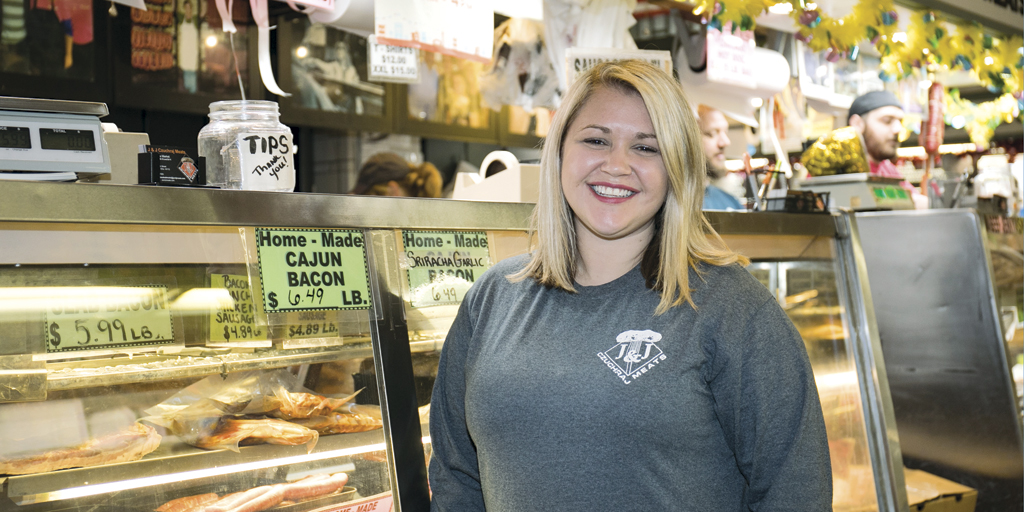
Still, vendors keep coming to the market in the hopes that they can make a name for themselves. In the fall of 2017, seven new vendors joined the ranks. From Avant Gardens’ exotic morels and European truffles, to the wild plants of Lakewood Plant Co., classic treats of B.A. Sweetie Candy Co., Piccadilly Artisan Creamery’s liquid nitrogen ice cream and Ora Bell’s Southern soul food, they were a promising new class of vendors that existed outside of the traditional meat and cheese box made popular by old-school merchants.
But by the summer of 2018, all but Ora Bell’s had closed. For Corey Maizel, owner of Avant Gardens, the decision to leave the West Side Market was practical. He was set up in the short aisle of the produce arcade, which now stands largely vacant, and often struggled to pull in a customer base during the early morning weekday hours that were required of his lease.
“People aren’t going to come out for that, so you’re asking your vendors to hemorrhage money,” he says. “Sometimes we would have 200 customers in a day and then we’d have weekdays where we’d serve three customers. We had days where the money didn’t change in the drawer.”
Handling high-end mushrooms, Maizel needed to store them at 35-degrees with 60 percent humidity to ensure their quality and shelf life, but transporting his products from the West Side Market’s basement coolers to the produce arcade outside proved difficult.
“I probably threw away 140 pounds of mushrooms a week just due to heat fluctuations,” says Maizel.
When the Apple Cured Meats stand became vacant inside the market after the owner died in the fall of 2017, Maizel submitted a request to take it over because the coolers of the inside stands could better store his products. After a few months of trying to get the city’s approval, the move was a wash.
“They could not give me an answer if I could move in there,” he says. “They kept telling me someone leased the stall, but I was there for six more months and no one leased the stall.”
That stand is still vacant today.
Other vendors in the short aisle of the produce arcade, such as Travis Alley, owner of Rooted in Cleveland, closed shop due to lack of foot traffic and disfunction.
“We went down to that slow end because we were hoping we would start something and kind of get our brand out there,” says Alley.
By offering locally roasted coffee alongside produce during the winter, Alley hoped to draw in customers, but it wasn’t enough. Like Maizel, Alley closed in December and plans to open a coffee shop elsewhere.
“Sometimes you have to tear it down and rebuild from the bottom,” says Maizel. “I’m not saying people have to sacrifice their businesses. You just have to implement standards and implement timetables to reach these standards.”
Kerry McCormack’s plan picks up where the centennial commission left off.
“With a hundred-year lifespan, things change,” says McCormack, who’s been spearheading the latest efforts to fix the market. “In order for it to thrive for the next hundred years, we have to make sure that it is on a good foundation.”
That foundation starts with analyzing the current management structure. Since August, McCormack has been working with the West Side Market Tenants Association and its vendors, along with Ohio City Inc. to put together a proposal for Mayor Jackson that requests a yearlong commission to create and assess the parameters of a nonprofit management governance model.
“The West Side Market needs, not just one individual, but a group of individuals that are focused on what is in the best interest of the market all day, every day, 24 hours a day, 365 days a year,” says McNair.
According to David O’Neil, senior director of public markets for national nonprofit Project for Public Spaces, there’s a national trend toward nonprofit management that’s seen far larger markets grow successfully, such as Pike’s Place in Seattle and the Eastern Market in Washington, D.C.
“By partnering with a more public process and partnering with more public engagement, they will be very proud of doing that,” says O’Neil. “The city would be unburdened by working with a public-private partnership that was able to access funding that the city could not access. Together, they can access more than either of them could do alone.”
By moving management away from the city, ideas such as utilizing a capital campaign fund to address repairs and renovating the second floor locker space into a demonstration kitchen are more likely to come to fruition. Out of the more than $100,000 in the 2012 capital campaign fund, $96,322.94 remains. None of those funds have yet to be used for capital improvements, but $5,000-$6,000 of that money is dedicated annually to marketing, advertising and the publication of West Side Market visitors guides.
“The reality is there was never any sort of agreement put in place and there isn’t an entity in place to be able to do that work,” says McNair. “So, it sits and waits.”
McCormack isn’t the only one ready to act on the market’s future, as community developer Alan Glazen announced his own plan with Eric Diamond who runs Cleveland Culinary Launch and Kitchen in February.
Rather than upheave the management of the entire market, Glazen’s focus was on converting the short aisle of the produce arcade — the most unused part of the market — into a vibrant sit-down eatery not unlike what you would find when walking into a food hall or Heinen’s, where Cleveland-made products are sold by floating market staff members.
“It would be every local food product made in Cleveland. It’d be some pots and pans, recipe books, cooking lessons, flowers — everything you see in Seattle or even in Cincinnati,” says Glazen. “That enables local makers and growers to have a presence in the market without having to give up their day jobs.”
Glazen’s plan would depend on grants and private funds, including $500,000 from Glazen and Diamond. He predicts it would bring in a minimum of 120,000 new customers within the first year because it provides a new take that’s hinged on social capital.
For some, such as Oakar, it’s not the route forward.
“The market is a produce place,” says Oakar. “It’s not basket-weaving. It’s not makeup. It’s not pots and pans. It’s produce, and that’s what they’re known for.”
Whitaker agrees.
“There’s a certain competition aspect of these mom and pop stands,” says Whitaker. “If we just become a store, the whole concept of a public market is gone. I’m trying to preserve that with the city or with a nonprofit.”
According to Glazen, the city has declined his offer because it doesn’t fit into the traditional makeup of the market structure.
“They have totally kiboshed my project,’” says Glazen. “We’re offering a really beautiful package and it has been turned down without one meeting.”
Although the city acknowledges the receipt of Glazen’s unsolicited concept, it has not issued a formal request for proposals. Still, the future of the market is a top priority. The city will allocate $5 million over the next three years, including $3 million in 2019, for critical improvements on the roof, electric work, water supply and more. They’re also developing a plan to increase outreach and create an entrepreneurial arm to help prospective vendors kickstart their businesses. By June, the city says the inside of the market will reach 100 percent occupancy.
“In order for this to be successful, we’re going to have to try some new and different things and we are open and amenable to that,” says Darnell Brown, the mayor’s chief operating officer. “We can have a great product, the building can be fine and working well, but if we can’t get people attracted to coming there, we’re no better off than we were.”
When asked about the possibility of implementing a nonprofit management structure, the city seems skeptical.
“Our interest is in keeping it, not just as an asset of the city of Cleveland, but keeping the manager oversight with the city as well,” says Brown. “Strengthening the relationships we have is key.”
Despite the direction the West Side Market may be heading, vendors are ready for action. Last July, the market’s exhaust system went down, causing unbearable heat to accumulate in the building. Rather than submit a repair request through traditional avenues, Tom McIntyre, owner of Kate’s Fish, took to social media, posting about the conditions to appeal to the public. It worked — within three days, the exhaust system was fixed.
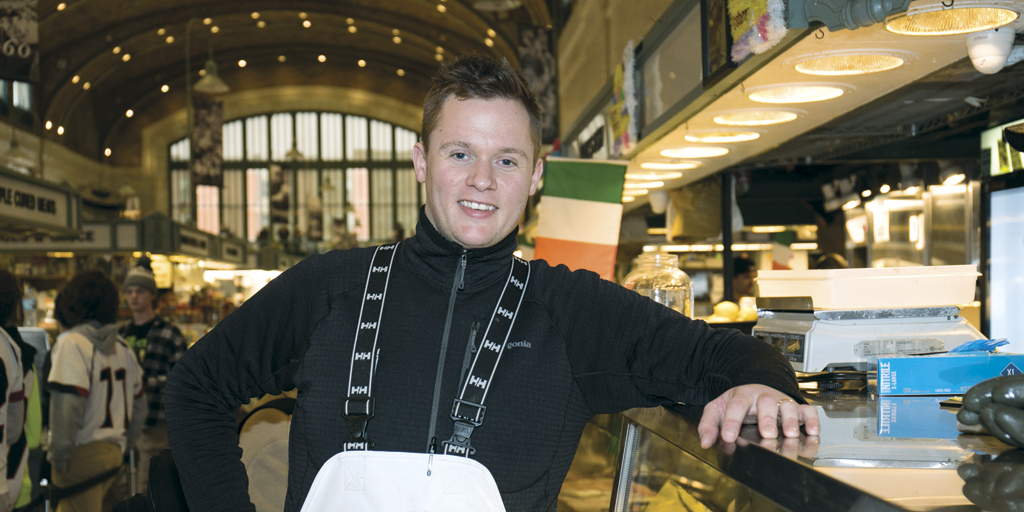
“There’s never been this many vacancies,” says McIntyre. “There’s never been this much turbulence in the media about the market.”
For McIntyre, now is the time for change. Since taking over his mother’s stand in 2012, he’s dreamt of turning the vacant fish market behind it into a commercial kitchen.
He wants to replace the coolers with a refrigerated walk-in and a glass wall where customers can watch him prepare and produce a colorful array of seafood. He wants to install a full hood system, dishing out fried, steamed and grilled fish, lobster rolls and ice cream cones. With a multiyear lease, he can renovate the space and provide after-hours takeout through a narrow corner window, perhaps turning the dark alley outside into the kind of place where someone will sit and eat with family and friends unbeholden to market hours.
That plan could take years to implement under the current management structure, but if McCormack’s plan pays off, the very system would shift and allow innumerable possibilities like McIntyre’s to be fulfilled.
“It can be a springboard for other businesses to enter the West Side Market and succeed,” says McIntyre. “It could be a cornerstone of a new West Side Market.”
The closer it gets to noon, the more the West Side Market bustles, its aisles packed with the clamor and clang of visitors trying to squeeze by for a better view of the market, the next loaf of bread, the right cut of meat.
Before we leave, Whitaker takes me just below the awning of an enormous window on the second floor. He points up toward the glass where a dusty old American flag hangs in the center.
“That’s the old locker room,” he says.
I follow him up a metal staircase winding past peeling white paint to the door that leads inside. There’s a padlock on the doorknob, courtesy of the city, so we can’t get in.
As of press time, McCormack and McNair have plans to deliver their proposal to Mayor Jackson by the end of April. There’s no telling if the mayor will agree to such a commission or a nonprofit management structure, but as we stare into the future, next steps need to be determined.
“If what is proposed is not a solution they find acceptable, hopefully that begins a conversation that continues to work on ways that maximize the potential of the West Side Market,” says McNair.
For now, looking through the window, I can make out the old wooden benches where West Side Market workers used to sit and change their clothes before and after a solid day’s labor. Boxes and old signage are piled high in the corner, and large faded black-and-white photographs sit propped against the far wall, showcasing crowds waiting in line, getting their groceries, pouring out of the West Side Market doors in a hurry toward some unknown celebration.
That is the same kind of energy, the kind of resurgence, that McCormack and McNair want to restore at the West Side Market.
“If this conversation moves forward, even all the little changes that may come out of this can continue to create momentum around it,” says McNair.
Out of the corner of my eye, I can barely make out the current crowd moving among the stands below. I wonder how often any of them look up here and think of this space which holds so much promise.
For a second, I can see it — this dust-covered room transformed into a kitchen where children learn how to filet their first fish, where couples sign up for cooking lessons with their favorite vendor. And all the while, out the outer-facing floor-to-ceiling windows, the city skyline looms, waiting to be seen from a new point of view.
For more updates about Cleveland, sign up for our Cleveland Magazine Daily newsletter, delivered to your inbox six times a week.
Cleveland Magazine is also available in print, publishing 12 times a year with immersive features, helpful guides and beautiful photography and design.





